April 11, 2014
Air Date: April 11, 2014
FULL SHOW
SEGMENTS
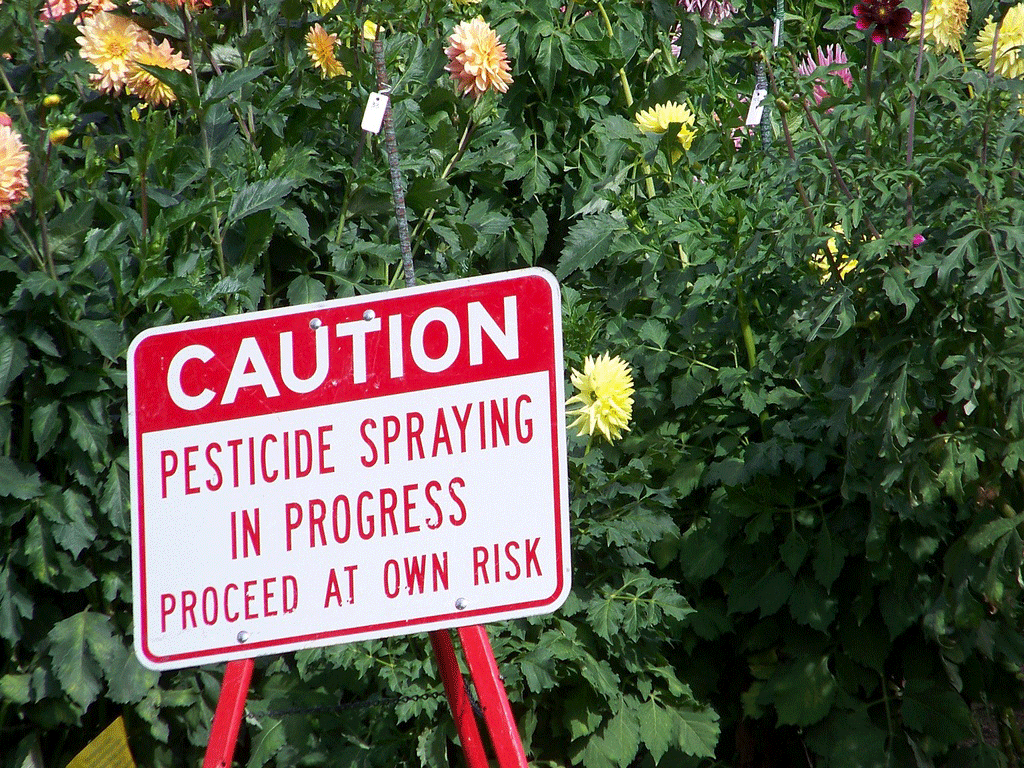
Pesticides Can Lower Intelligence
View the page for this story
New research shows prenatal exposure to pesticides can cause reduced intelligence and developmental delays similar to exposure to lead. Journalist Susan Freinkel investigated studies that charted these effects and talked with host Steve Curwood about her investigation published in The Nation. (06:25)
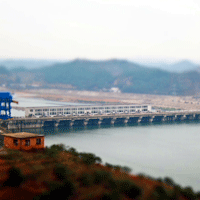
Hydropower Overload In China
View the page for this story
For the past 65 years, China has built nearly two dams per day, and wants to expand its hydroelectric capacity. Jennifer Turner, director of the China Environment Forum at the Washington DC's Wilson Center, tells host Steve Curwood that China plans to ramp up dam installation in Yunnan Province, which raises the risks for this biodiversity hotspot in Southwest China. (06:35)

Greening the Web
View the page for this story
If the internet were a country, it would be the sixth largest consumer of electricity in the world. Greenpeace analyst Gary Cook has written a new report detailing which tech companies are using renewable energy to power their servers. He tells host Steve Curwood who’s helping to green the web. (06:30)
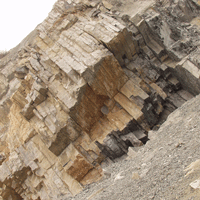
The Growing Threat From Methane
/ Helen PalmerView the page for this story
Over the short term, methane is 80 times more powerful as a greenhouse gas than carbon dioxide. The White House has launched plans to control methane emissions from most US sources, but as Living on Earth's Helen Palmer reports, evidence from prehistory suggests methane was a major factor in Earth's largest extinction, and warming projections warn of ballooning emissions in the future. (06:40)

Send Us Your Haiku -Listener Letters
View the page for this story
We dip into the Living on Earth mailbag to hear from you our listeners, and ask you to send us your environmental haiku poems in honor of Earth Day this month. (02:20)

Beyond the Headlines
View the page for this story
In this week’s trip beyond the headlines, Peter Dykstra tells host Steve Curwood about a multi-billion dollar settlement with a major US energy company, concerns about a class of molecules in household cleaning products called quits, and some prescient words 107 years ago from Teddy Roosevelt. (04:20)
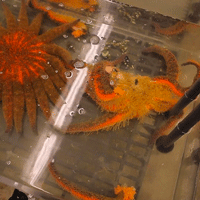
Sea Star Mystery
/ Katie CampbellView the page for this story
A mysterious malady is infecting many species of starfish up and down the US west coast. It causes lesions and the sea stars rip themselves apart. Katie Campbell reports on the biologists down at the shore trying to unravel what's going on. (04:40)
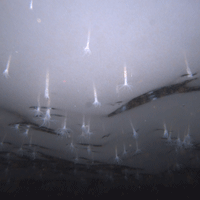
New Species Discovered Under Ice
View the page for this story
Under the Antarctic ice lurk newly discovered sea anemones. Frank Rack, Executive Director of the U.S. Antarctic Geological Drilling team, tells host by Steve Curwood about how the team discovered this new species that hangs upside down from the Ross Ice Shelf. (06:15)
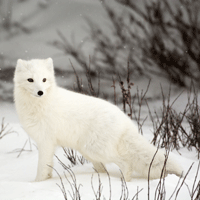
Searching Out the Arctic Fox
/ Mark Seth LenderView the page for this story
It's cold, and barren on Greenland’s west coast. But as writer Mark Seth Lender discovered, there is life there is you search it out carefully and listen closely. (03:10)
Show Credits and Funders
Show Transcript
HOST: Steve Curwood
GUESTS: Susan Freinkel, Jennifer Turner, Gary Cook, Frank Rack
REPORTERS: Helen Palmer, Katie Campbell, Mark Seth Lender
[THEME]
CURWOOD: From Public Radio International, this is Living on Earth.
[THEME]
CURWOOD: I’m Steve Curwood. Spraying for roaches in apartments or spraying for caterpillars on the farm raises of the risk of pregnant women having less intelligent children.
FREINKEL: The kids who had the highest prenatal exposures tended to be at much higher risk for neurodevelopmental problems. When they were five they were more likely to be hyperactive. When they were seven they tested lower on IQ tests, they had a seven point on average lower score.
CURWOOD: And those deficits come with a high cost to society. Also, searching for exactly what is wrong with all those cute starfish that are dying in droves.
HARVELL: We know that all organisms get sick, they get bacteria, they get viruses just like humans do. They get the cold and the sniffles, but it’s a lot harder to see it happening when they are under the ocean.
CURWOOD: We'll have those stories and more this week on Living on Earth. Stick around.
[NEWSBREAK MUSIC: Boards Of Canada “Zoetrope” from “In A Beautiful Place Out In The Country” (Warp Records 2000)]
ANNOUNCER: Funding for Living on Earth comes from Stonyfield Farm, makers of organic yogurt, smoothies and more.
Pesticides Can Lower Intelligence
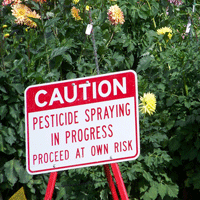
(Credit: jetsandzeppelins, Flickr, Creative Commons 2.0)
CURWOOD: From the Jennifer and Ted Stanley Studios in Boston and PRI, this is Living on Earth. I’m Steve Curwood. Studies that have followed children from the womb to grade school in California's Salinas Valley and in low-income housing in New York City have found that pesticide exposure can have lifelong adverse affects. When the Salinas Valley studies started, some half a million pounds of organophosphates were used there every year - farmers use less now, but pesticides are still sprayed widely. Susan Freinkel conducted an in-depth investigation of these studies and their findings for the journal, The Nation. She joins me now. Welcome to Living on Earth.
FREINKEL: Well, thanks for having me.
CURWOOD: So tell me. How were these studies conducted? First, the one in Salinas Valley.
FREINKEL: Well, they’re longitudinal studies, so in 1999 to 2000, the researchers started recruiting women, mostly migrant workers who were pregnant and who would be willing to take part in the study. And they brought the women in and they took blood samples, urine samples, from them while they were pregnant and at delivery. The New York study was looking at people who were exposed because they lived in apartments where landlords sprayed for cockroaches. This is a low-income group of people. So again, they recruited the mothers while they were pregnant, checked their blood and urine and so forth for their levels of pesticide exposure, and then as the kids were born, started following the kids both through checking their blood samples, and also following them for their developmental progress.
CURWOOD: So, what are the results here? What did these studies find in terms of the effects on these kids who were exposed prenatally to pesticides, and postnatally, I imagine, as well?
FREINKEL: Yeah, what they found, and it’s an important set of findings, is that even exposure to small amounts of pesticides has a much bigger effect than we often think. They found that the kids who had the highest prenatal exposures tended to be at much higher risk for neurodevelopmental problems, and they found this at sort of every stage where they looked at the kids. In the Salinas Valley study, at the time that the kids were six months old, the ones who had taken the highest exposure while in the womb had poorer reflexes. When they were two, that same group of kids was at higher risk for something called Pervasive Developmental Disorder, which is something akin to Asperger’s. When they were five, they were more likely to be hyperactive and have trouble paying attention. And then the finding that sort of got people’s attention was that when they were seven, the kids who had had the highest prenatal exposure, tested lower on IQ tests. They had a seven point on average lower score, which doesn’t sound like a lot on an individual level if you’re talking about one kid who’s seven points lower than another kid. Then it’s not such a big deal. But when you start to look at that on a population-wide level, it’s a huge difference. And it translates into meaning that you have as many as 50 percent increase in the number of functionally disabled adults and a 50 percent decrease in the number of gifted adults. So it’s a significant impact.
CURWOOD: Now, what are the social and economic consequences of prenatal exposure for children to these pesticides?
FREINKEL: They’re potentially huge. I talked to an environmental health specialist who had sort of calculated the effects of lead poisoning, which again, some people say, the kinds of effects are similar with pesticides. And when he looked at the economic impacts of lead poisoning, he found it cost the US $51 billion annually in lost economic productivity because what you’re talking about is, you know, everything from more kids who need special education, to fewer workers who are capable of high level complex tasks or decision-making and those sort of then ripple out through society and the economy.
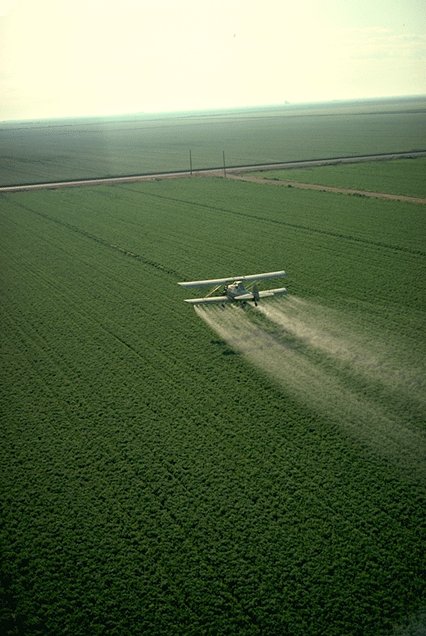
A plane spraying pesticides in California (USDA photo by Charles O’Rear, Wikimedia Commons)
CURWOOD: So what are the most common pesticides that cause these issues?
FREINKEL: Well, these studies looked at organophosphates, which is a class of pesticides that ironically came into use in the 60s and 70s as a “safe replacement” for DDT. Organophosphates are not as widely used now as when the studies were launched, but the problem is that we substitute out new pesticides for the organophosphates and we don’t actually know whether the substitutes are any safer, and, in fact, some of the ones that are being used to replace organophosphates have some serious red flags around them. One is neonicotinoids, which are a class of pesticides that have been suspected to contribute the whole collapse of honeybee colonies. Another is a group called pyrethroids, and there just recently came out with a report suggesting they may be linked with behavioral problems.
CURWOOD: What can people do to change this? And what are the steps that would reduce or even prevent exposure?
FREINKEL: Well, for the people that were in these studies, the researchers have done a great job of educating them on ways they can prevent exposure, and they’re really basic things. They’re things like: take your shoes off before you go into the house, take your work clothes off, don’t hug your kids while you’re still wearing clothes you wore in the fields. For the rest of us, produce remains one of the primary ways that kids are exposed to pesticides, and the good news is here is that we can reduce our kids exposures by being more careful with the produce that we give them. Studies have shown that when you switch from conventional sprayed produce to organic produce, the level of pesticides in the kid’s bloodstream actually goes down. But you don’t even necessarily need to buy organic. You can wash produce really throughly under running water - it’s better under running water than soaking it - for a good 20 seconds, rubbing the skin with your fingers. Peel vegetables that you would normal peel. Dry it with a clean towel or paper towel. Pull away outer leaves of leafy greens which are commonly sprayed things. And eat a variety...so you’re not getting too much of any one type of pesticide.
CURWOOD: Susan Freinkel is a writer who just completed an investigation of pesticides published in The Nation. Thanks so much, Susan, for taking the time today.
FREINKEL: Thank you, Steve, for having me. It was fun.
Related link:
Read Susan Freinkel’s special investigation for The Nation here:
Hydropower Overload In China
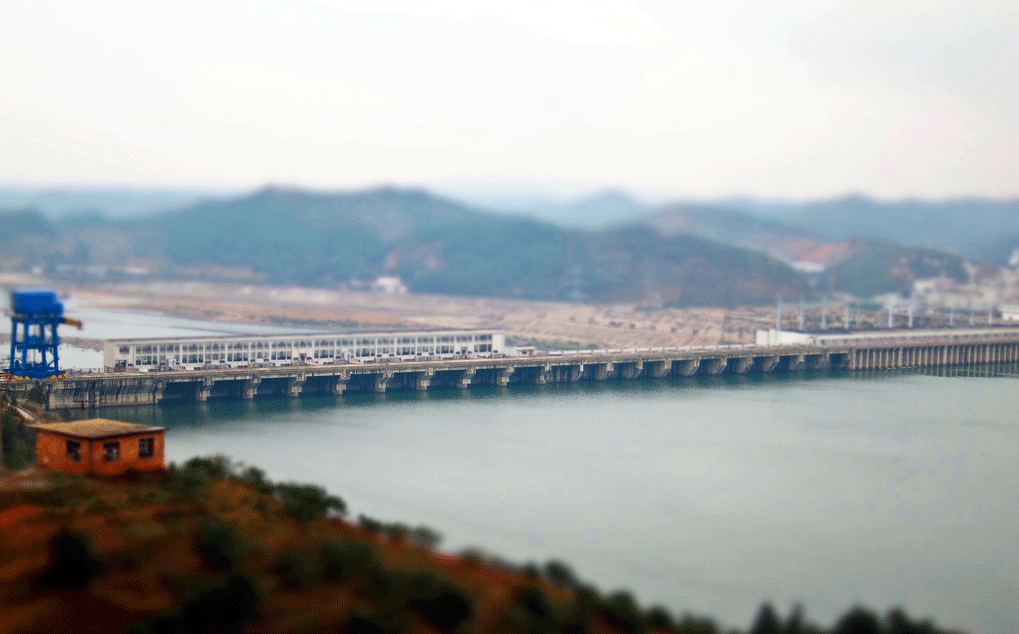
Wan’an Dam in Southwest China. (Chen Zhao)
CURWOOD: China is a country of superlatives. It has the largest population in the world, and its rapid development also makes it the largest emitter of climate changing carbon dioxide. China also has the most hydroelectric dams in the world, about 80,000. Since 1948, it's built nearly two large dams every day. By 2020, China hopes to generate 430 gigawatts of hydropower, more than the European Union and the US combined. But all those dams require water and many are profoundly changing ecosystems, according to Jennifer Turner. She’s Director of the China Environment Forum at the Woodrow Wilson International Center for Scholars in Washington, DC.
TURNER: A couple of years ago, when they passed their most recent five-year plan, they really decided that they wanted to make a bigger cut into lowering their greenhouse gas emissions, and they really saw that increasing hydropower was a very important strategy as a kind of game-changer for coal.
CURWOOD: Look for a moment at the economics for me. If they’re been putting up all these dams, there’s a constituency of companies that like to put up dams. They’re looking for those contracts, I would imagine.
TURNER: Exactly. It’s a huge industry. It’s not just within China, it’s also overseas. You have this very unfortunate situation where builders are leading the planning and there’s not very good protection. A few years back, there was this massive fish sanctuary - it’s a nature reserve - and there was this - what was called an “ecological red line” that this area is going to remain protected in the upper reaches of the Yangtze. Well, lines have moved because a number of dams needed to go in. So you have this very unfortunate situation where builders are leading the planning, and there’s not good protection.
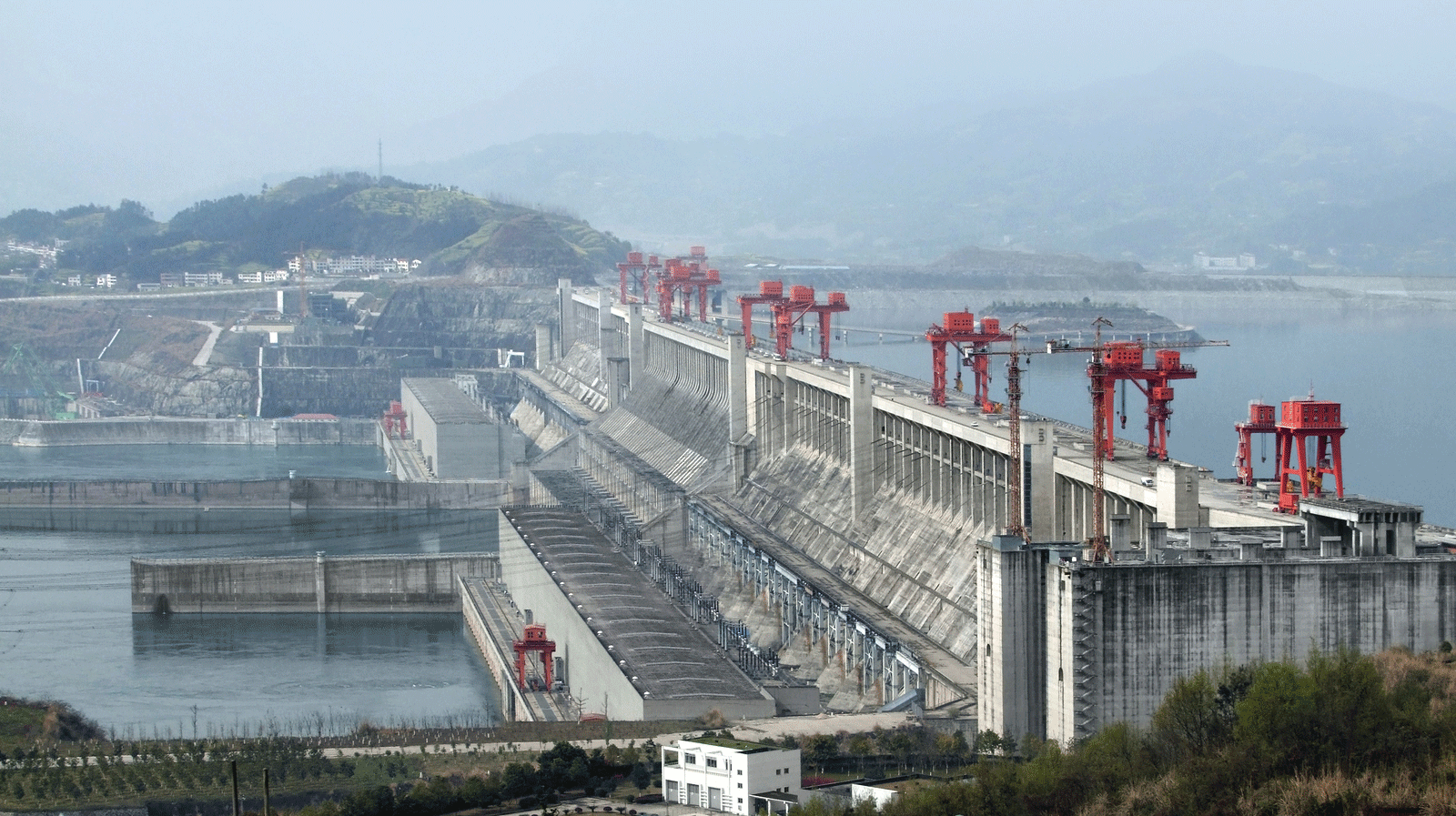
Three Gorges Dam on the Yangtze River is the world’s largest hydroelectric dam by installed capacity. (bigstockphoto.com)
CURWOOD: So, by 2020 we’re looking at more hydropower than what’s produced between the US and Europe combined. Where is all this electric juice going?
TURNER: Well, to expand their cities, China is in the process of urbanizing another 300 million people over the next 15 years. About 70 percent of their electricity goes to the industrial sector, making the steel and cement, but also making products for export. Something like 25 percent of their electricity is for export production, so we get some of it too.
CURWOOD: So when we buy an appliance made in China, we’re helping to make their air bad and ruin their biodiversity?
TURNER: In effect, we are connected. China is such an integral piece of the global supply chain, right? What powers that but electricity? And so we are indeed connected to the water problems that are happening in China around hydro.
CURWOOD: How much water is there to keep all these dams operational? What are the odds of running out?
TURNER: Well, China’s largest lake is Lake Poyang. It’s about twice as big as the city of London, or it should be. In January, it went completely dry. One of the reasons is that it’s no longer getting the periodic floods of the Yangtze River. And then layer on top of that, droughts. Many of the existing hydropower dams are reservoirs that are about half full, and they can’t provide enough electricity, so what they end up doing is building a coal-fired power plant next to them because every hydropower plant that goes in of any size is committed to send electricity to the east coast. So besides more hydropower going in, we’ve discovered in our own, on-the-ground research that there’s actually more coal-burning going on in southern China as well.

China has plans for between 50 and 80 new hydroelectric dams, most of them in Yunnan Province in Southwest China. (Wilson Center, China Environment Forum)
CURWOOD: Wait a second, I’m scratching my head here.
TURNER: [LAUGHS]
CURWOOD: Hydropower is supposed to reduce the need to use coal, but because there’s not enough water, they’re putting up coal plants anyway next to these hydropower things?
TURNER: That’s what we discovered in the time when there was particularly bad drought, but droughts are growing more common. Again, remember when I said that the builders are leading the planning so the rivers are not being evaluated carefully before these dam cascades go in.
CURWOOD: Jennifer, please tell me about the region of western China that’s experiencing this dam boom?
TURNER: The richest nature in some ways - it’s kind of retreated to this far southwestern part of China. So you have, in essence, giant Yellowstone Park type areas down there with many different types of ecosystems, from bamboo groves to savannas to meadow to freshwater, wetlands, to coniferous forests. You have everything. It’s beautifully diverse, particularly in terms of the plant life. Animal life, not as much. I mean, over the past decades as China’s developing has been pushing further west, you’ve seen some of the larger species, the elephants - they’re disappearing - tigers no longer really exist in the wild, but where there are the pandas and some of these larger species, it is in southwest China and their habitat is increasingly being eaten up by development, and hydropower is really at the frontlines of that development.

The iconic panda bear still makes its home in some remote patches of Yunnan Province.
CURWOOD: Now what about the biodiversity corridors that rivers generally provide? I mean, what are the impacts there from building these dams?
TURNER: We have more information about the fish species. I mean, not only are nature reserves being just ignored, the fact that the fish, they can no longer migrate the way they are supposed to. They’re have been attempts to do some kind of fish farming to try to reinvigorate the fish species, but then when the small fish, the little fry, go downstream they just get killed basically going through the turbines and the many dams. They really can’t survive the process as they move downstream.
CURWOOD: Well, building new coal-fired power plants is bad for air quality and the climate and hydrodams are bad for the animals, the ecosystem, biological diversity. What’s China supposed to do?
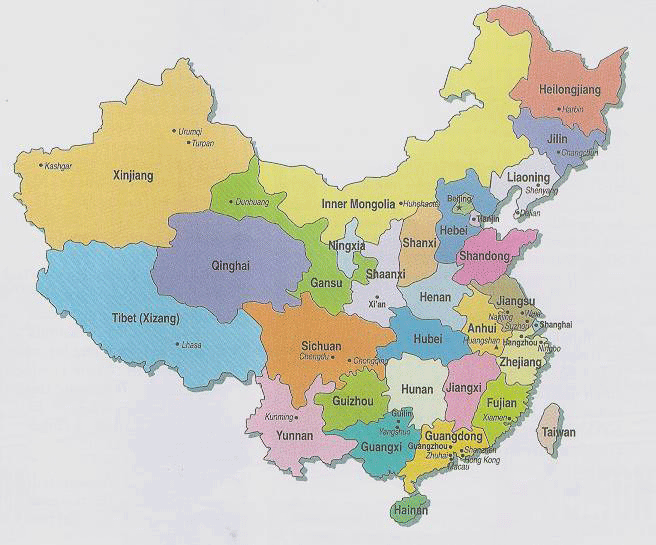
Yunnan Province is in the Southwest of China, bordering Vietnam, Laos, and Myanmar. (Wikipedia.com)
TURNER: Between a rock and a hard place. China is going to keep building hydropower, but dam siting could be done better in looking at the environmental impact. Current dams could be managed better. But it is really a race, because when we look at the growth in electricity use in China, it doubled between 2000 and 2007, it’s in the process of doubling again, and so it’s a rush to try to get enough electricity to keep the economy running, to continuing being the world’s factory. It’s tough, and I can’t say that I can give a complete answer on what they should do except perhaps to ramp up some of the less environmentally-damaging forms of power that they’re working on. Renewables like the wind, the solar, and particularly on energy efficiency. A lot more could be done on that account.
CURWOOD: Jennifer Turner is Director of the China Environment Forum at the Woodrow Wilson International Center for Scholars. Thanks so much for taking the time today.
TURNER: Thanks so much for talking to me.
Related link:
Wilson Center: Mapping China’s Dam Rush
[MUSIC: Tom Verlaine “Meteor Beach” from Around (Thrill Jockey 2006)]
CURWOOD: Coming up...checking in on what's to love about a large green apple. Keep listening to Living on Earth.
[CUTAWAY MUSIC: Thelonious Monk: “Boo Boo’s Birthday” from Monk Underground (Columbia Records 1968)]
Greening the Web

The Greenpeace Airship A.E. Bates flies over Facebook headquarters with a banners reading "Building a Greener Internet" and "Who's The Next To Go Green?" Apple, Facebook and Google have committed to powering their data centers with renewable energy, and Greenpeace is challenging other tech companies (Amazon, Twitter, Netflix and Pinterest) to join them. (photo: George Nikitin, Greenpeace)
CURWOOD: It's Living on Earth, I'm Steve Curwood. We've made it a custom during April - Earth Month - to update some of our past stories, and today we have a mostly good news story to report. Two years ago we spoke with Gary Cook of Greenpeace about its campaign to persuade major Internet companies to use renewable sources of electricity. Greenpeace calculates that the IT industry is the sixth largest consumer of electricity worldwide and its greenhouse gas emissions are roughly equivalent to those of the airline industry. Well, now Greenpeace reports some companies have made amazing progress in this arena, though there are some laggards. Gary Cook joins me now to discuss the new report. Welcome back to Living on Earth, Gary.
COOK: Thanks very much, Steve. Good to be here.
CURWOOD: So back in 2012, you criticized Apple for using carbon-intensive energy from coal plants to power its servers. Let’s listen.
COOK: Apple is one of the most innovative and popular companies in the world. They challenged us all to ‘think different’ in the past, and what Apple really needs to do is accept that challenge with regards to its energy use for its cloud. So what they really need to be doing is demanding better from Duke energy, who has a number of coal plants very close by that use mountain top removal coal from Appalachia, and they’re a big customer. They have the ability to demand better, that Duke think different, and provide them clean energy.
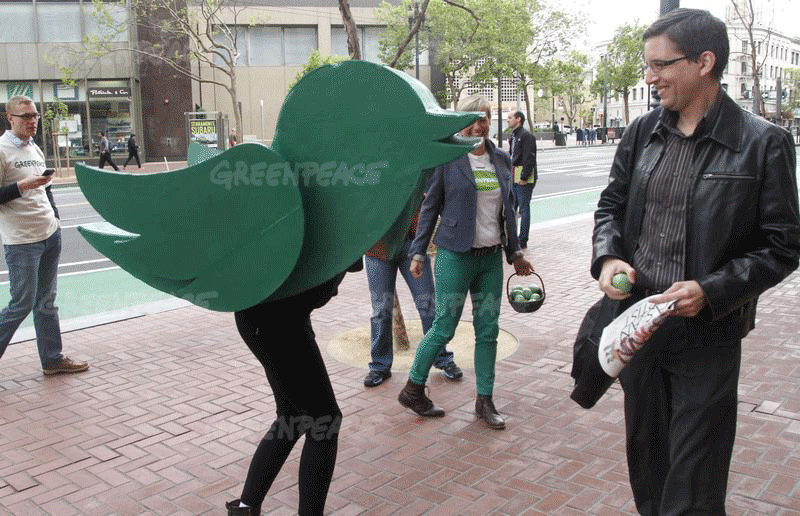
A Greenpeace activist in a green Twitter costume outside Twitter headquarters. (photo: George Nikitin, Greenpeace)
CURWOOD: Well, Gary Cook. It’s been two years. How’s Apple doing now?
COOK: Apple has been thinking different fortunately for us all. Just after we spoke, they even made a commitment to be 100 percent renewably powered, and as the end of last year, they even made that goal. So, it’s been quite a big shift.
CURWOOD: 100 renewable energy. How’s that possible?
COOK: It requires some effort. Apple has done a lot in North Carolina where they have their largest data center in terms of deploying two different solar farms and an onsite fuel cell that’s powered with biogas energy, so it’s all renewable. They have several other data centers which, depending on the location - in Oregon they’re using wind, in Nevada they’re using solar again.
So they’ve actually shown a commitment from the top, been very aggressive, probably the most aggressive of any of the brands to make sure as they grow, they’re using clean energy.
CURWOOD: Biogas. Where are they getting that from?'

Facebook’s data center in Prineville, Oregon (photo: Intel Free Press, Creative Commons 2.0)
COOK: Currently, they’re getting that from landfill and some other renewable sources. The landfill is methane capture in the southeast, and they’re having that piped to where their data center is in North Carolina.
CURWOOD: What other companies are doing what you see is a good job when it comes to powering the internet?
COOK: Well, fortunately, it’s not just Apple. We’ve seen Facebook and Google, they’ve been very aggressive as well. Facebook is a great example of a transition we’ve seen in the last two years, where two, three years ago they were growing quickly, building locations that were mostly coming from coal power, but their data center, they just announced over a year ago in Iowa, is now going to be 100 percent renewable, and as a result of their investment there, has gotten the utility to spend over $2 billion on a new wind farm investment, and it’s resulted in the largest order of wind turbines in history. So it shows when companies hear from their customers, get motivated and have real commitment, they can make a big difference about where their energy comes from.
CURWOOD: Wow. So Facebook, the company is actually driving a change at the utility level, you’re saying?
COOK: Exactly. Our online world, it uses a lot of electricity. If it was a country, it would rank up there in the top six in electricity consumption. But if we grow it in the right ways, with the right power, it has the potential to help us make that transition to renewables. And we’ve seen a few of the companies like RackSpace and SalesForce and Box also make big commitments to renewable energy, and they’re starting to shift what powers the grid.
CURWOOD: So what technology, what internet related companies aren’t doing such a good job in your latest survey?
COOK: The most prominent would probably be Amazon.
CURWOOD: From your perspective, how bad is Amazon? How much climate-destroying power are they using, do you think?
COOK: It’s difficult to tell, to be honest, because Amazon is, unfortunately, very much reluctant to reveal any information on where they get their energy from, or how large they are. A lot of other online properties use their data centers. Netflix is one of them. They use them instead of building their own.

Greenpeace International Senior IT Policy Analyst Gary Cook speaks at a forum on the sustainability of the IT sector at the Exploratorium. (photo: George Nikitin, Greenpeace)
We’ve done our own assessment and put that out there. Because they’re such big customers, if they were committed to renewable energy in the same way that some of these other big companies are, they could really start to shift the needle on where the grid gets its energy. And honestly, the longer they wait, the more they risk in terms of their brand and their market share because I think some of their competitors are leading the way in renewables, and the longer they wait, the longer they’ll have to catch up.
CURWOOD: Where’s Microsoft in all this?
COOK: Microsoft has been one that has unfortunately been lagging behind. They have made a commitment to be carbon neutral, but up until recently at least, they had been mainly doing that through buying carbon offsets and paying for renewable energy credits. However, just as a few months ago, they made their first long-term contract for wind energy in Texas to power their data center in San Antonio. So that’s a great sign, we hope to see more from them in the months to come.
CURWOOD: How big of a deal is this Gary? How much does powering the internet contribute to climate change?
COOK: Others have estimated it’s roughly on par with airline travel in terms of the greenhouse gas emissions, and it’s growing very quickly. Right now, at its best estimates, we have between two-and-a-half to three billion people who are currently online, and expect that to double by the end of the decade. So more and more people are going to be relying on this technology, and that’ probably a good thing in many ways. But if we do it with the same old energy sources we had before, it would actually take us in the other direction. And we see companies who say, “We can do better than that. We don’t have to take just whatever’s off the rack. We can demand better,” and use their buying power in ways that makes their energy green and makes the grid green for all of us.
CURWOOD: Gary Cook is a Senior Policy Analyst for Greenpeace. Thanks for joining us again.
COOK: Thanks so much, Steve.
Related link:
Read the Greenpeace report, Clicking Green here
[MUSIC: Paco De Lucia, Al Di Meola, John McLaughlin “Espiritu” from Verve. Polygram 1996]
The Growing Threat From Methane
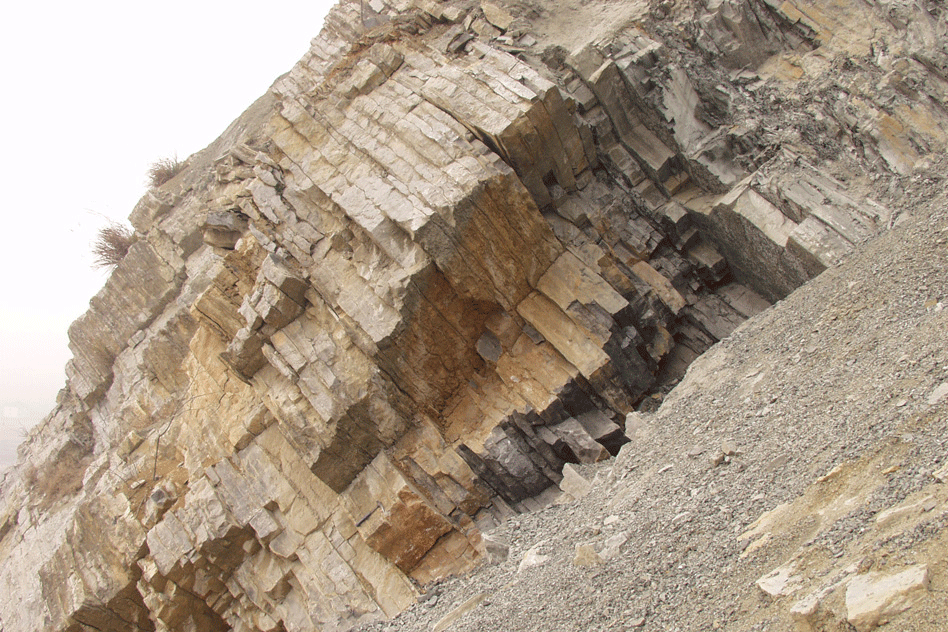
A photo of the permian triassic boundary at Meishan, China. This photo shows the limestone beds in between the volcanic ash beds that the researchers were able to date. (Shuzhong Shen)
CURWOOD: Every so often, a cluster of stories come along around the same time that make you think there must be something in the air, or maybe the water. Well that's been happening recently, and indeed there IS something in the air - and in the water - and it’s the powerful greenhouse gas, methane. Living on Earth's Helen Palmer has the story.
PALMER: There's more than twice as much methane in the atmosphere now as there was before the Industrial revolution. That's thanks to our energy generation, agriculture, and the stuff we throw away. And there's reason we should care - methane's an extremely powerful greenhouse gas.
OBEITER: Over a 20 year period it's over 80 times as strong as CO2 over 100 years. The number's about 34 according to the most recent estimates.
PALMER: That's Michael Obeiter, the methane expert at the World Resources Institute. So he welcomes the latest announcement from the White House's Climate Action Plan, new rules to control methane.
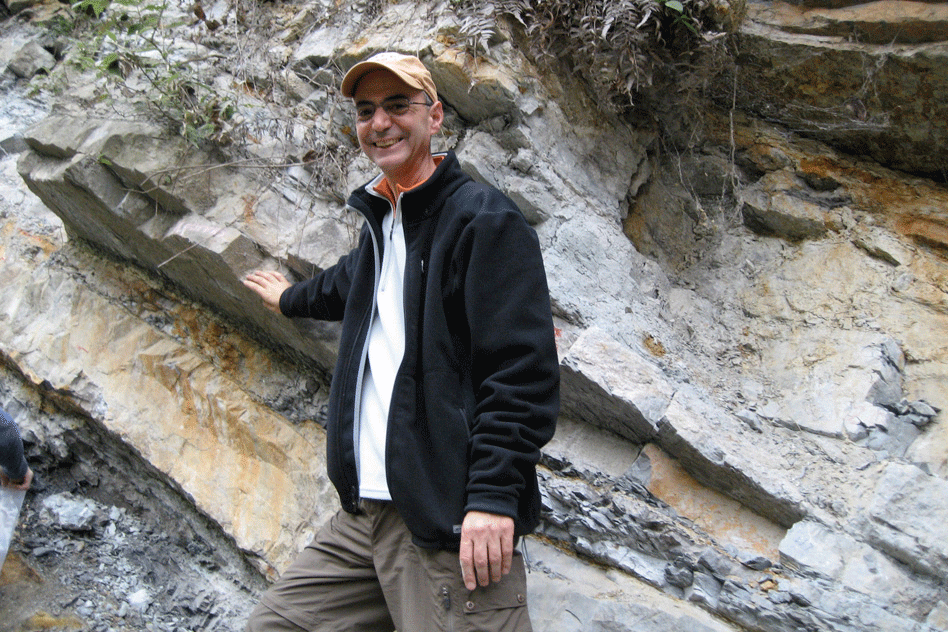
MIT professor of geophysics Daniel Rothman stands next to part of the Xiakou formation in China. His right hand rests on the layer that marks the time of the end-Permian mass extinction event, showing large amounts of nickel spewed from volcanic activity at this time, 252 million years ago. (Daniel Rothman)
OBEITER: It's got a four-pronged approach, looking at methane emissions from various sectors. It's going to address emission from landfills, coalmines, agriculture and oil and gas development which are four of the largest sources of methane emissions in the US.
PALMER: Obeiter says some of the steps the White House laid out have a lot going for them. Take the plans for oil and gas production, for example.
OBEITER: The Administration is planning to look at ways to reduce leaks and vents of methane from oil and gas development on public lands. This is an excellent strategy, but it's also among the lowest hanging fruit. Methane is the primary component of natural gas, and so capturing methane allows producers to sell more gas to market.
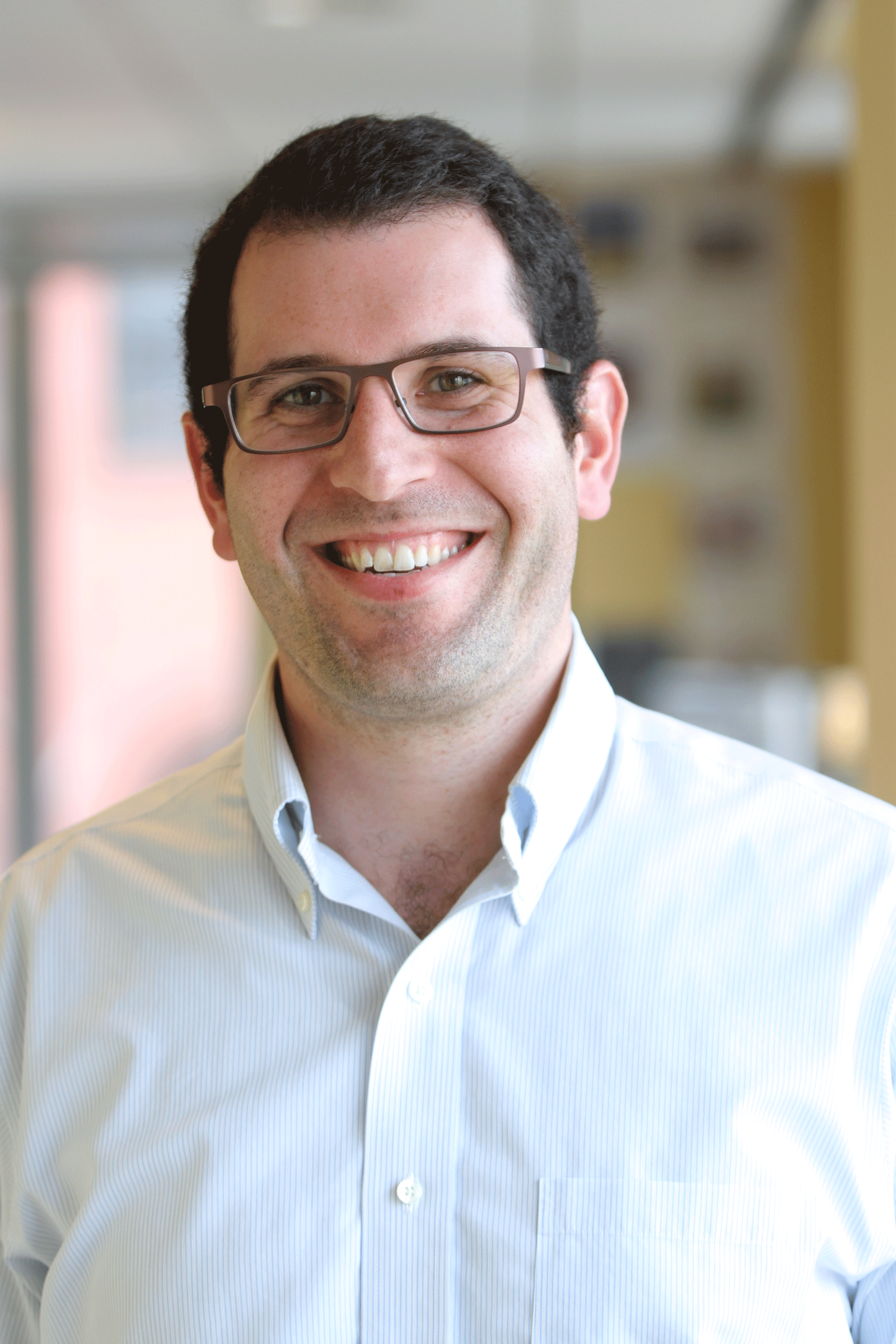
Michael Obeiter, Senior Associate at World Resources Institute. (World Resources Institute)
PALMER: It's tougher to control methane that escapes from decaying organic garbage, but tapping gas from landfills can generate energy, and that’s what the tech firm Apple is doing. The EPA plans to release updated landfill standards this summer along with voluntary measures to help dairy farmers install methane-digesters, to generate power from manure. And talk of methane digesters brings us to a second piece of news: MIT research that fingers methane-creating microbes as perhaps a major player in what's called the end-Permian extinction. Lead author, MIT Geophysicist Daniel Rothman.
ROTHMAN: It's the biggest extinction in the last 540 million years, which is the length of time over which we have a good understanding of the geologic record.
PALMER: It was about 252 million years ago and about 90 percent of all species on earth were wiped out. Massive volcanoes covered Siberia with some 240,000 cubic miles of magma, and launched 10,000 gigatonnes of carbon dioxide into the atmosphere. But Rothman says after that the arithmetic on the amount of carbon just didn't add up - carbon levels kept going up and up and up over time.
ROTHMAN: We hypothesized that the cause could have been microbial in origin. There are reasons to believe, geochemical reasons to believe, that there was a stockpile of detritus in the oceans and we asked ourselves, “What if a microbe evolved a new ability to consume that detritus?”
PALMER: They went looking for such a microbe, and found an archaeon, an ancient microbial species called Methanosarcina that about this time underwent an evolutionary change so it could more efficiently chew up organic matter and produce methane.
ROTHMAN: So we therefore found a culprit if you wish, having hypothesized that a microbe could have done it. We then identified a microbe, Methanosarcina. So that led to a date.
PALMER: And that date is 240 million years ago, plus or minus 40 million years, which conveniently includes the end-Permian extinction. Rothman says there's further evidence - methane producing microbe needs nickel, and the massive volcanic eruptions created huge nickel deposits found in sediments, allowing the Methanosarcina to flourish. The methane they created reacted with seawater to create CO2, which acidified the oceans, explaining another mystery of this extinction.
ROTHMAN: Researchers before us had noted that animals with heavily calcified shells preferentially went extinct and that had led them to conclude that the kill mechanism, as they worded it, was ocean acidification. So what we're doing is providing a mechanism for the ocean acidification.
PALMER: Given current concerns about increasingly acidified oceans, this research from pre-history sounds a warning note for the future. And so does some more research just published in the journal Nature. It examined methane locked up in decomposing organic matter in water sources such as ponds and wetlands. In 2011, Iowa State Ecology professor John Downing told Living on Earth just how much methane is locked up in small ponds and the like.

Schematic of the global methane cycle. Numbers represent annual fluxes in Tg(CH4) yr–1 estimated for the time period 2000–2009 and methane reservoirs in Tg (CH4).
(IPCC report 2013)
DOWNING: Well, it’s kind of hard to wrap your head around the numbers, because they’re usually measured in things like petagrams which is kind of an immense amount of material. But it’s equivalent to about 25 percent of all of the carbon that’s taken up and sequestered by terrestrial environments worldwide.
PALMER: As Professor Downing says, that methane's locked up there, but the new Nature paper examines what's likely happen as these ponds and rice paddies heat up. Analysis of 1,600 measurements across the globe shows that as the temperature rises, more methane escapes. For instance, a rise from zero to 30 degrees Celsius would create emissions as much as 57 times higher. That's an extreme temperature rise, but possible between winter and a summer heat wave. All biological rates tend to double with each ten degrees of warming. As MIT's Daniel Rothman puts it...
ROTHMAN: This is a very good example of positive feedback in which as the climate warms the permafrost will melt, previously frozen organic matter will be then metabolized by methanogens or other micro-organisms which will produce more greenhouse gases which will then produce more warming which will speed up rates even more.
PALMER: Which means that the warnings of both the methane burp associated with the Permian extinction, and projections for accelerating methane emissions as ponds and wetlands warm, make attempts by the White House to control this potent greenhouse gas escaping to the atmosphere not only prudent but vital. Michael Obeiter of the World Resources Institute, again.
OBEITER: The next 20 years will be crucial in ensuring that globally greenhouse gases peak within the next ten years or so and then start declining pretty significantly if we're going to avoid the worst impacts of climate change.
PALMER: At the moment, he says, time is not on our side. For Living on Earth, I'm Helen Palmer.
Related links:
- White House Methane control plans
- World resources institute Comment on the White House plans
- A Close Look at Fugitive Methane Emissions from Natural Gas
- Capturing the Fugitives: Reducing Methane Emissions from Natural Gas
- 5 Reasons Why It's (Still) Important to Reduce Fugitive Methane Emissions
- Methane fluxes show consistent temperature dependence across microbial to ecosystem scales
- Freshwater Methane Emissions Offset the Continental Carbon Sink
- Carbon and Other Biogeochemical Cycles - Climate Change 2013 ...
- Methanogenic burst in the end-Permian carbon cycle
- 3 Ways the US and China Can Work Together for Responsible Shale Gas Development
[LETTERS THEME]
Send Us Your Haiku -Listener Letters

(Bigstockphoto.com)
CURWOOD: Time now, for comments from you.
Eleanor Sommer is glad Living on Earth is covering the issue of plastics that can leach into our food. But she says that replacing plastic sippy cups with stainless steel doesn't necessarily make a drink safe.
"We buy milk, juices, tea, even organic yogurt in PLASTIC containers," she says, "which are purported to be “safe.” Does that mean they do not contain estrogenic properties? Do they leach other chemicals into our food while waiting for purchasers on store shelves?"
Good questions.

(Gregory Johnson)
And Jerry McGuire writes from Fort Mill, South Carolina.
"Thanks to Living on Earth, thousands of us are watching a bald eagle family on the nest by means of a live camera feed from Berry College in Georgia. My family has watched it daily seeing the hatching, feeding, growing, and even the adults fighting off invaders, and now waiting for the fledging."
The Intergovernmental Panel on Climate Change set April 13 as the release date for its latest report with proposals for action governments should take to address the worst effects of climate change. We can expect heated rhetoric on the subject in coming weeks, and as a kind of antidote we suggest poetry.
Last week we spoke with NOAA oceanographer Gregory Johnson who interpreted part of the notoriously dense UN climate change report as haiku.
JOHNSON:
Forty years from now
children will live in a world
shaped by our choices.
CURWOOD: Johnson reminded us of the rules of haiku - which, as you probably know is a formal style of Japanese poetry that dates back to the 17th century.
JOHNSON: The strict rules are a syllable count of 5-7-5 in the three lines. They’re supposed to be a reference for the season, and the Japanese have specific words for these I think. And they’re also supposed to have what the Japanese call a cutting word, sort of a transition.
CURWOOD: Well, to honor Earth Day coming up on April 22, we want you, our listeners, to tap your own creative muse and send us your haiku. The topic can be anything Earth day inspired that inspires you, from spring flowers to climate worries to eco heroes.
Send us your Earth Day haikus to comments@loe.org. Once again, comments @ LOE dot org. Or you can use our postal address it's PO Box 990007, Boston, Massachusetts, 02199. Or read your haiku aloud on our listener line at 800-218-9988. That’s 800-218-9988. If you use the phone be sure to record your name and a number where we can call you back.
Related link:
IPCC as Haiku
CURWOOD: Coming up...mysteries from under the sea. That's just ahead on Living on Earth. Stay tuned.
ANNOUNCER: Funding for Living on Earth comes from the Grantham Foundation for the protection of the environment, supporting strategic communications and collaboration in solving the world’s most pressing environmental problems. The Kendeda Fund, furthering the values that contribute to a healthy planet, and Gilman Ordway for the coverage of conservation and environmental change. This is PRI, Public Radio International.
[CUTAWAY MUSIC: Stanley Turrentine: “Gibraltar” from Sugar (CTI Records 1971)]
Beyond the Headlines
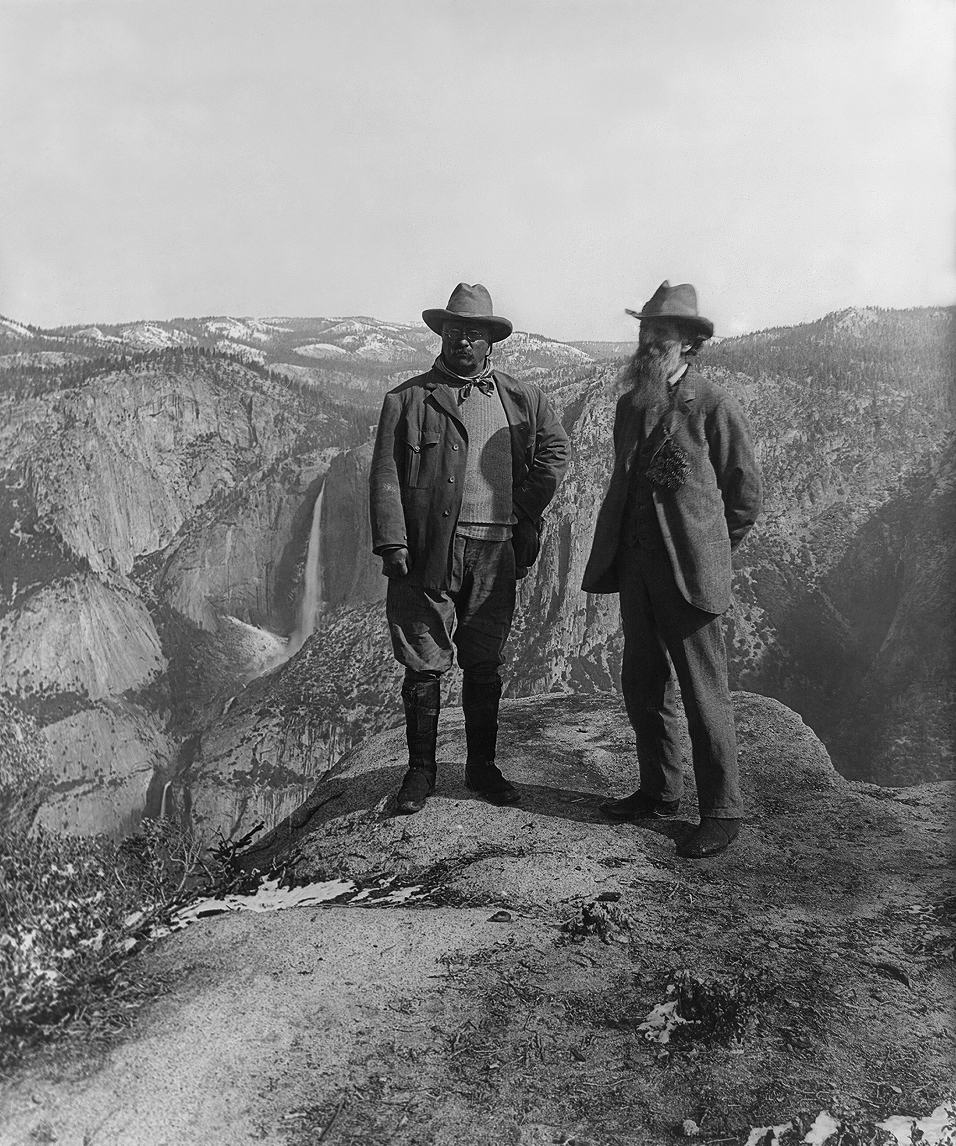
John Muir and Teddy Roosevelt in Yosemite National Park (photo: Library of Congress)
CURWOOD: It's Living on Earth, I'm Steve Curwood. We check in now with Peter Dykstra, our guide to the land beyond the headlines. He's the publisher of Environmental Health News - that’s EHN.org and DailyClimate.org and joins us on the line from Conyers, Georgia. Hi there, Peter.
DYKSTRA: Hi Steve. I’m going to start you off this week with a blockbuster of a legal case involving two famous, or maybe infamous, names from environmental history. Steve, what do you think of when you hear the name Anardarko Petroleum?
CURWOOD: I think of part owners of the well that blew out in the Gulf of Mexico.
DYKSTRA: Correct. And how about Kerr-McGee?
CURWOOD: Oh yeah. That’s the company where Karen Silkwood worked and was possibly exposed to plutonium, and she died mysteriously on her way to meet some reporters.
DYKSTRA: Correct again. That was back in the 1970s, back in the 20th century. Anadarko bought out Kerr-McGee a few years ago, and when they did, they inherited a mess of toxic chemicals and radioactive matter that resulted in a record $5.1 billion dollar cleanup settlement with the Federal Government, with eleven states, and also with the Navajo Nation.
CURWOOD: That’s a lot of dough! And didn’t Anadarko pay out another big settlement for the Deepwater Horizon spill?
DYKSTRA: Yeah, that one was $4 billion, but it was paid to BP, not to the Feds. But there was one stunning detail to be found in both of these settlements: Anadarko and its shareholders apparently felt they got off easy. When they agreed to pay $4 billion to BP a few years ago, and again last week when they settled for over $5 billion with the Feds, both times, Anadarko’s stock price shot through the roof the same day.
CURWOOD: Peter, are we in the wrong business?
DYKSTRA: All depends on your point of view about money, and about journalism, and about the environment.
CURWOOD: What have you got for us next?
DYKSTRA: I’ve got some confusion about quats.
CURWOOD: I guess you’ll start un-confusing us by describing what “quats” are.
DYKSTRA: Quats are quaternary ammonia compounds, like benzalkonium chloride.
CURWOOD: Um gee, um, thanks for clearing that up.
DYKSTRA: Oh, my pleasure! Quats are the favored substitute for replacing a suspect ingredient in hand soaps and other personal care products called triclosan, and triclosan is suspected of having endocrine-disrupting properties. It’s fallen out of favor with many consumers, may soon face stricter FDA regulation, and some personal care giants like Johnson & Johnson, Procter & Gamble, Colgate-Palmolive have started to phase triclosan out of many products.
CURWOOD: And these quat compounds are a safe replacement?
DYKSTRA: In many cases, yes, but there’s also research suggesting that while quats are not endocrine disruptors, some can impact your respiratory system.
CURWOOD: So there’s a chance that instead of solving a potential problem, we’re swapping it out for a new risk?
DYKSTRA: Right. The latest consumer giant to commit to dropping triclosan is Avon, with its legendary door-to-door sales force. But Avon hasn’t said what they’ll use as a replacement for triclosan.
CURWOOD: Just as long as they don’t replace the Avon Ladies, Peter.
DYKSTRA: Well, here in the 21st Century there’s also the Avon internet, and probably, surely, some Avon men. But for the potentially risky chemicals in our personal care products, consumers just need to stay aware.
CURWOOD: What do you have for us on the anniversary calendar this week?
DYKSTRA: Well, I’ve got an antique for you. 107 years ago this week, President Teddy Roosevelt issued sort of a State of the Union speech for kids. He called it the “Message to the School-Children of the United States”, and it was mostly a pitch for kids to celebrate Arbor Day. So in 1907, before broadcasts, before there were podcasts, before there were webcasts, a Republican President said these word to our kids:
"We of an older generation can get along with what we have, though with growing hardship; but in your full manhood and womanhood you will want what nature once so bountifully supplied and man so thoughtlessly destroyed; and because of that want you will reproach us, not for what we have used, but for what we have wasted.”
CURWOOD: Wow, 100 years ago! What do you think Teddy Roosevelt would make of us today?
DYKSTRA: Well, I think Teddy Roosevelt would be a very angry 155 year old Republican, and he might also be upset that Arbor Day’s been lost a little in the shuffle. Arbor Day, by the way, is April 25 this year.
CURWOOD: And that’s just after Earth day. Hey, thanks, Peter.
DYKSTRA: Thanks a lot, Steve. Talk to you soon.
CURWOOD: Peter Dykstra is publisher of DailyClimate.org and Environmental Health news. For more information about these topics and many others, go to our website, LOE.org.
Related links:
- Read about the 5.1 billion dollar settlement with Anadarko
- Avon is dropping Triclosan, but will they replace it with quats?
- Read the full text of Teddy Roosevelt’s “Letter to Students” from 1907
[MUSIC: Avishai Cohen “Seven Seas” from Seven Seas (Sunnyside Records 2011) or Sea Anemones Q&A: The Beatles “Sea Of Monsters” from Yellow Submarine (Capitol records 1969)]
Sea Star Mystery

Two sea stars share a tank, one is healthy and the other is dying. (Katie Campbell)
CURWOOD: Since last summer, starfish have been dying at a rate that scientists have never seen before; a strange disease is causing them to literally rip themselves apart. It started with the Sunflower Sea Star, but it's spread to nearly a dozen species up and down the west coast of the US, and kills about 95 percent of the animals affected. Marine biologists are perplexed. Katie Campbell of the public media collaborative EarthFix has been following the researchers work and has our report.
[SEAGULLS, DIVERS HAULING EQUIPMENT TO THE WATER, CHECKING THEIR BREATHERS]
CAMPBELL: It’s a chilly gray morning at the Mukilteo ferry docks, just north of Seattle. A group of scientists and volunteer divers shimmy into suits and double-check their air tanks. They move with the urgency of a group on a mission. And they are. They’re trying to solve a marine mystery. Starfish, or sea stars as scientists like to call them, are dying here and nobody knows why. And it’s not just happening in Puget Sound. Sea stars are wasting away by the tens of thousands up and down North America’s Pacific shores.
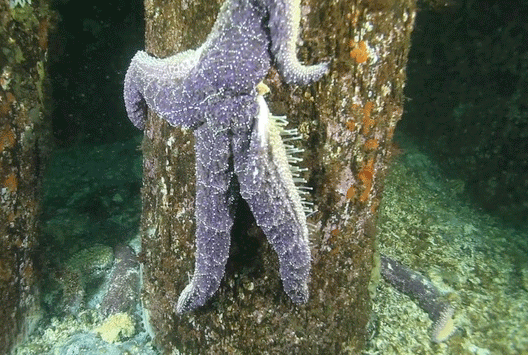
A dying Pisaster ochraceus sea star in the waters off Seattle dangles by its tentacles off an underwater piling that would normally be covered with a rainbow of sea stars. (Laura James)
MINER: We’re here today at the Mukilteo docks to collect some sick and healthy sea stars for an infectiousness experiment that I hope to start this afternoon.
CAMPBELL: That’s Ben Miner. He’s a biologist who’s leading this mission. Miner is a professor at Western Washington University. He studies how environmental changes affect marine life.
[DIVERS WALKING INTO WATER, BREATHING USING THEIR AIR TANKS]
CAMPBELL: One by one the divers sink beneath the surface. Normally this place is brimming with life, a favorite hangout for starfish. But the divers discover a deadly scene.
MINER: On the pilings there were healthy sea stars but we were also coming across arms and piles of deteriorated sea stars. So you just see piles of goo all over the place.
CAMPBELL: Scientists first started noticing sick and dying starfish last summer on Washington’s Olympic Peninsula. They coined it "Sea Star Wasting Syndrome” because of how quickly the stars disintegrate. Reports have since surfaced from Alaska to Southern California. About a dozen species of sea stars are dying, and that raises an important question. Scientists wonder if this is an indicator of a larger problem.
MINER: It certainly suggests that those ecosystems are not healthy.
CAMPBELL: Some have suggested that radiation from Japan’s Fukushima nuclear disaster could be the culprit. But scientists say that’s unlikely because the die-offs aren’t happening in one big wave. They’re patchy. It’s popped up in places like Seattle and Santa Barbara, and not in others, such as coastal Oregon, where wasting has only been reported at one location. Just 80 miles from Mukilteo, on San Juan Island, Drew Harvell hasn’t seen any signs of sick starfish.
HARVELL: We’re still holding steady here and we don’t know why. Honestly, sometimes the more I see, the more interesting or perplexing it becomes,
CAMPBELL: Harvell is collecting tissue samples from a healthy sunflower star.
[WATER DRIPPING. HARVELL CUTTING UP STARFISH IN THE LAB.]
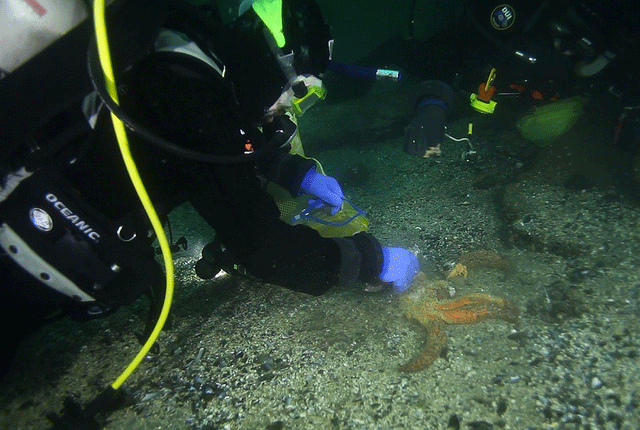
Ben Miner collects arms of dying starfish for lab analysis. (Laura James)
HARVELL: This is a healthy Pyncapodia with no signs of lesions.
CAMPBELL: Harvell is a marine epidemiologist from Cornell University. She’s coordinating coast-to-coast research into the starfish epidemic from the University of Washington’s Friday Harbor labs. She’ll send these samples to a lab at Cornell. There they will be compared against sick starfish and analyzed for viruses as well as bacteria and other protozoa.
HARVELL: We know that all organisms get sick, they get bacteria, they get viruses just like humans do. They get the cold and the sniffles, but it’s a lot harder to see it happening when they are under the ocean.
CAMPBELL: The first step, she says, is to figure out the exact fingerprint of the disease. And how it’s moving from place to place.
[MINER’S TEAM COMING ASHORE]
CAMPBELL: Back in Mulikteo, Miner’s team collected about 20 fat, multi-armed stars. Some appeared healthy. Others had lesions and twisted arms.
[TRUCK DOOR CLOSING]
CAMPBELL: Miner trucked the stars to an aquarium-filled lab in Anacortes. He placed one sickly star in with one healthy-looking star. He also set up tanks containing only healthy-looking stars for comparison. Then he waited to see what would happen.
MINER: One of them was very sick and the other two started ripping themselves apart. The arms just crawl away from the particular body.
CAMPBELL: You heard that right. The arms crawled in opposite directions until they tore away from the body. Starfish have the ability to lose their arms as a form of defense. But these starfish were too sick to regenerate their arms. Their insides spilled out. And they died within 24 hours. But surprisingly, their healthy looking neighbors didn’t show symptoms any more rapidly. So being in the same tank with a dying starfish doesn’t seem to accelerate the disease. It’s clues like this that are helping scientists hone in on the cause. They’re starting new experiments to test possible infectious agents and they hope to make an announcement in the coming months.
In Mukilteo, I’m Katie Campbell reporting.
CURWOOD: There's more at our website, LOE.org, including details of how you can use a Smartphone to report sightings of sickly sea stars to help the biologists.
Related links:
- Earth Fix
- Help Track The Sick Sea Stars - text #SickStarfish
New Species Discovered Under Ice
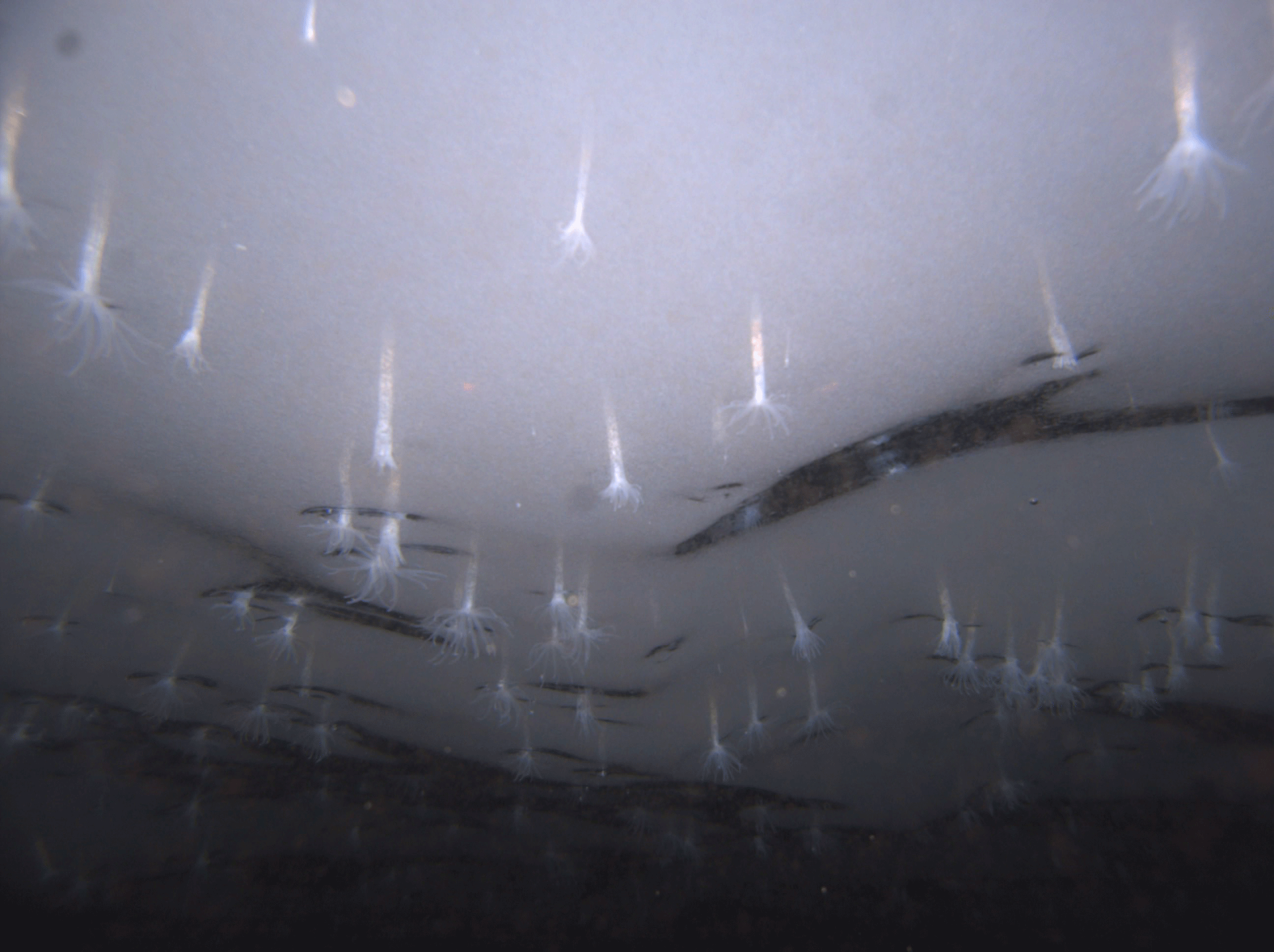
An underwater picture of the sea anemones. (Photo: Frank R. Rack, ANDRILL Science Management Office, University of Nebraska-Lincoln)
CURWOOD: Now we turn from very sick sea creatures to mysterious and newly discovered ones. A team from ANDRILL, that's the Antarctic Geological Drilling, has discovered a new type of sea anemone, while testing a remotely operated vehicle under the Ross Ice Shelf off Antarctica. The researchers are geologists and sedimentologists. The director of the team is Frank Rack from University of Nebraska.
RACK: We were melting holes through the 270 meters of ice. We were deploying oceanographic sensors to measure current speed and direction. We were taking sediment cores, and we were also deploying the underwater robots to look underneath the ice and do an engineering test of the robot because it was the first time it was deployed through that thickness of ice shelf.
CURWOOD: And let’s see. The amount of ice you’re drilling through...it’s the equivalent of an 80-story office tower or something like that?
RACK: It’s something like that, yes.
CURWOOD: That’s a lot of ice.
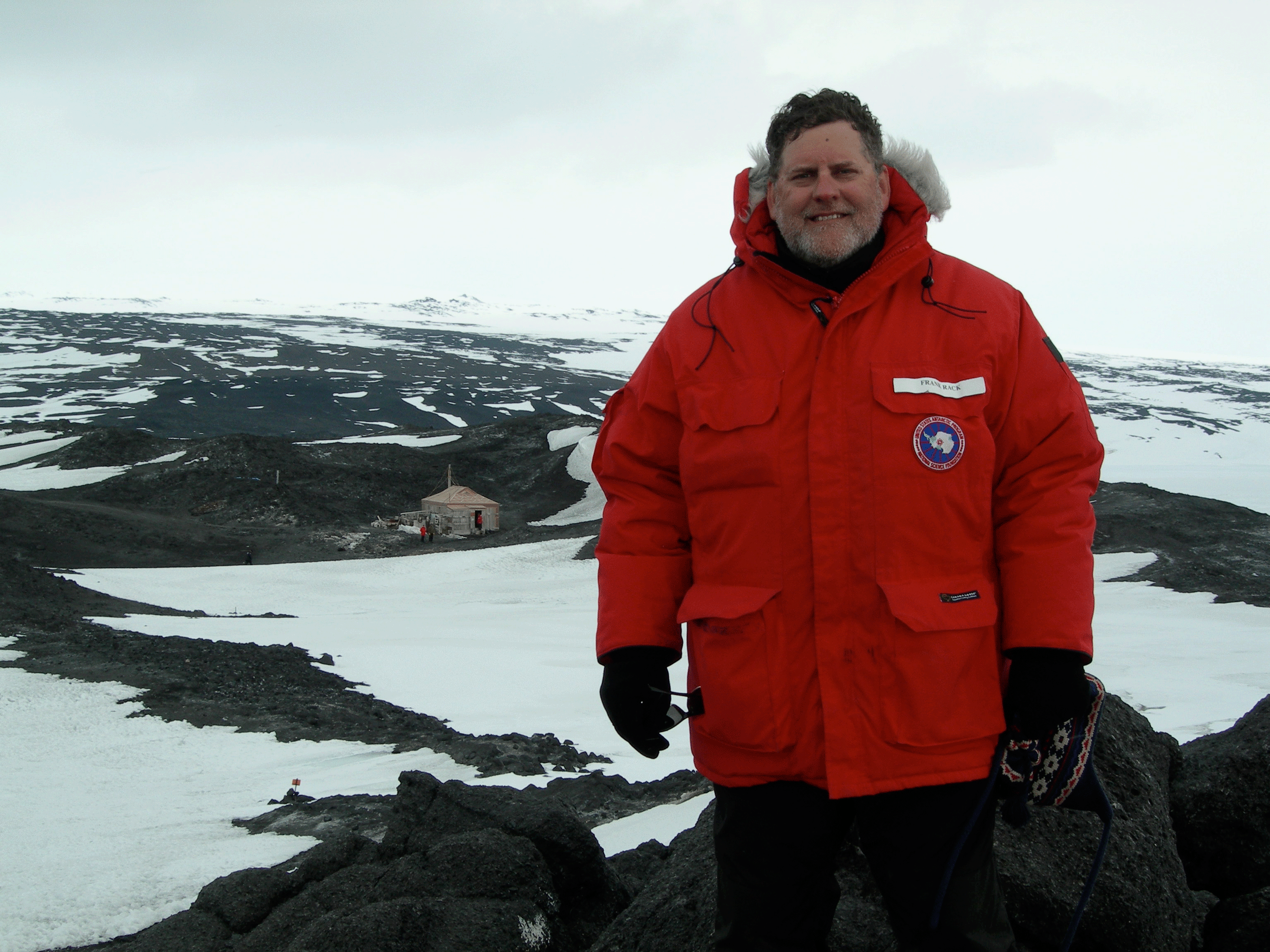
Frank Rack in Antarctica. (Frank R. Rack)
RACK: It is a lot of ice.
CURWOOD: So, how long did it take you to find sea anemones down there?
RACK: It was a total surprise. We melted a hole through the ice, and we had been running a camera down to the sea floor and back up. And in those observations, the ice shelf looked plain and featureless, but when we put down the robot and had more sensitive camera systems and could get very close to the bottom of the ice, that’s where the anemones appeared. They were quite numerous and widespread, and they were living in burrows in the bottom of the ice shelf, hanging upside down into the water column.
CURWOOD: What do they look like?
RACK: In the light of the robot, they glowed a bit orange, and they had tentacles that extend out. So they’re quite distinctive.
CURWOOD: Now, anemones would like to have home, a burrow or something. How do they arrange that with the ice?
RACK: Yeah, we don’t know for sure, but in that area the ice shelf is melting at a meter a year, so somehow, they’re preserving a burrow
in that lower layer of ice as that melting is going on.
CURWOOD: So if they’re on the bottom of the ice, way down under the sea, they’re upside down, they’re hanging down like bats, huh?
RACK: They are. They’re at about 230 meters below the sea level, and then there’s another 650 to 680 meters of water below. So the currents are circulating water across the continental shelf and up underneath the floating ice shelf, and the anemones are feeding and surviving in that environment that’s about minus two degrees Centigrade water temperature.
CURWOOD: Now how big are these sea anemones?
RACK: They’re only about an inch long. They can extend about a little big longer when they relax so they can contract up into their burrows and then they can extend outward into the water column, but they’re quite small.
CURWOOD: Now what else did you find with them?
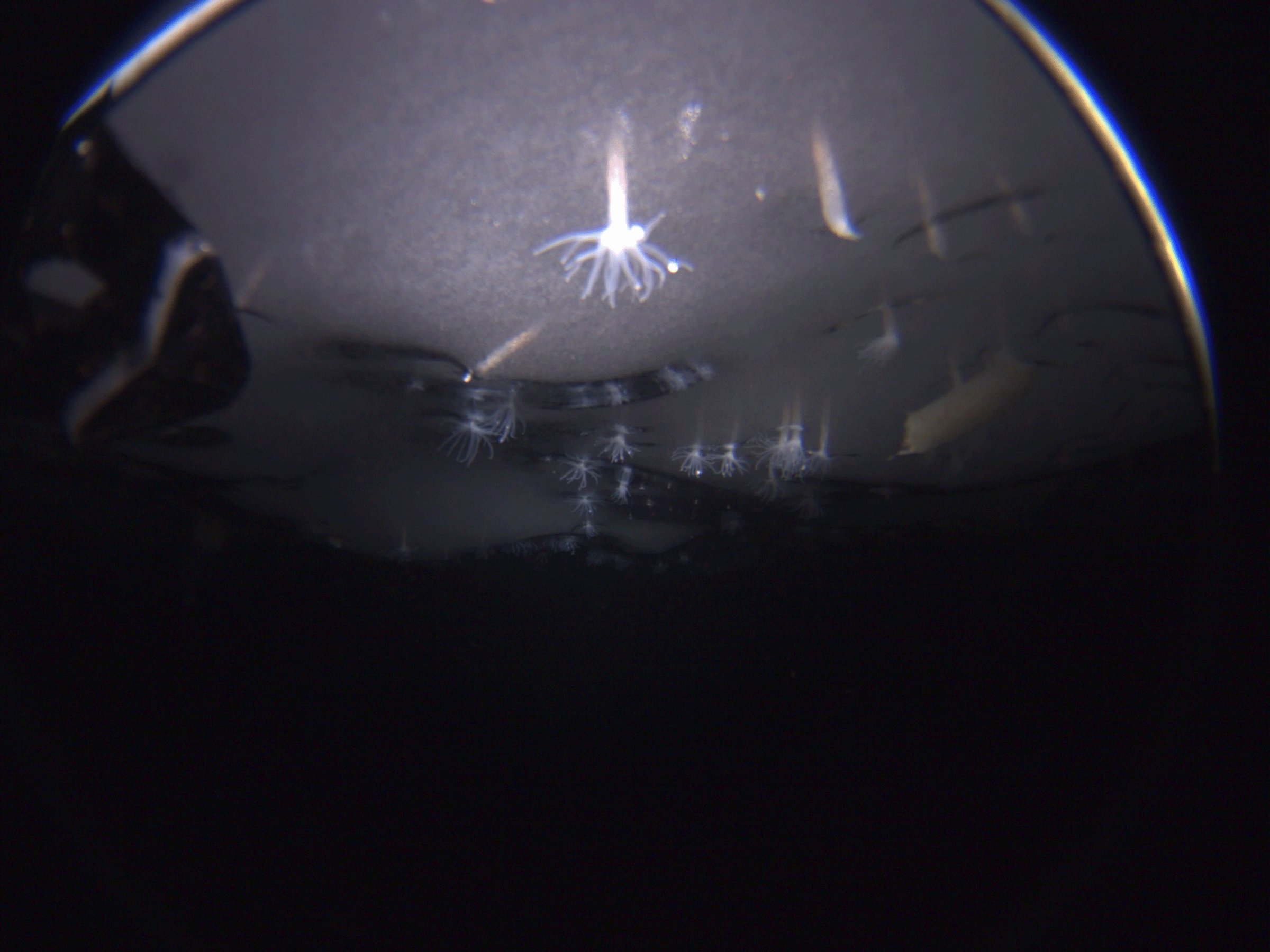
The sea anemones and “egg roll” creature. (Photo: Frank R. Rack, ANDRILL Science Management Office, University of Nebraska-Lincoln)
RACK: We found a whole variety of other organisms. There was an unidentified organism that we nicknamed the “eggroll” that basically is an inch in diameter, about four-inches long and could move laterally. It seemed to be neutrally buoyant, and it could grab onto the anemones and hold on. And there were other organisms like jellyfish and regular fish that exhibited unusual behavior. So they swam upside down, and they kind of treated the bottom of the ice shelf like the bottom of the ocean.
CURWOOD: Well, what exactly is the egg roll?
RACK: We’re not sure. We haven’t been able to have a biologist to hazard a guess at what it is. We think it’s some sort of sea cucumber or something like that, but it’s probably a new species.
CURWOOD: What or who do you suppose eats anemones down there?
RACK: Yeah, we believe that there’s many organisms within the food web of this ecosystem. We don’t really know the life cycle of the anemones, they’re filter feeders, there are other organisms that are predators and grazers in this environment, and when the anemones die they sink through the water column and feed the benthos at the bottom of the ocean underneath the ice, or get recycled in the water column. So there’s quite a complex series of predators and prey in this area, and we hope to be able to elucidate this further with additional studies in the future.
CURWOOD: And here I thought that there were just penguins and some krill down there.
[LAUGHS]
RACK: Yeah, there’s just a rich variety of life in the southern ocean and surrounding Antarctica.
CURWOOD: How were you able to document that it’s a new species?
RACK: The engineers who were operating the remotely operated vehicle devised a suction sampler by inverting one of the thrusters on the robot and having a plastic tube that came out in front of the camera, so it was like a vacuum suction device that we could push up close to the bottom of the ice and then capture some of the organisms. So those organisms were preserved and Marymegan Daly at Ohio State University was able to look at the taxonomy of the organism and determine that it was new species.
CURWOOD: Now you took samples of the anemones but not the egg roll. Why?
RACK: The egg roll was too big. The kind of sampler we had, we just couldn’t capture it. And at that time, in Antarctica, there was a lot of fog out in the area of the ice shelf where we were working. So we couldn’t get supplies from McMurdo station, maybe like a plankton net or something that we could have used to collect additional specimens.
CURWOOD: When are you going to go back and look for more creatures?
RACK: Well, it’s a function of proposals to the National Science Foundation and funding. We’re hoping to get a proposal in this April, and if we’re fortunate enough to get funding, then potentially go as early as 2015, 2016.
CURWOOD: I want to thank you for taking this time. Frank Rack is the Executive Director of the US team that’s part of ANDRILL, that's the Antarctic Geological Drilling. Thanks so much, Frank.
RACK: You're very welcome.
[MUSIC: Cooper-Moore, Tom Abbs, Chad Taylor “The Fox” from Triptych Myth (Hopscotch Records 2004)]
Searching Out the Arctic Fox
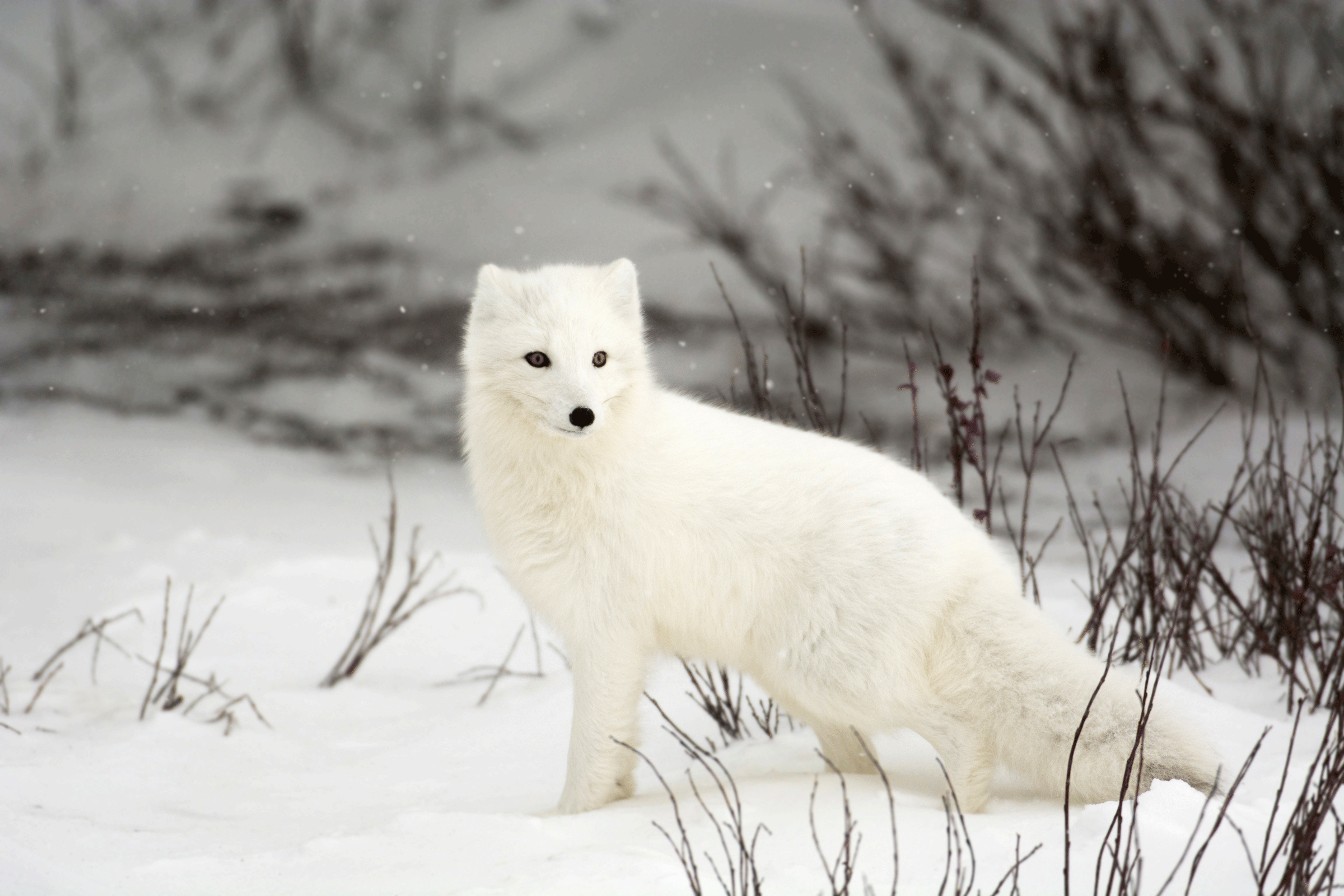
Arctic Fox (Bigstockphoto.com)
CURWOOD: The west coast of Greenland, especially if you study it from the ocean, is barren and foreboding. Finding any sign of life takes time and patience, and as writer Mark Seth Lender discovered, you need an acute sense of hearing as well.
[Arctic Fox © 2014 Mark Seth Lender All Rights Reserved]
LENDER: White in the darkness Arctic Fox, crosses the outcrop, pads over lichen and spongy moss on her soft round feet onto the rounded hollow where a glacial river once bored through. White as fast ice, as snow fresh-fallen in the course of an afternoon, white as water (once was glacier) rushing and gushing toward the fjord far below.
Or is Fox velvety blue, dark as shadow in a crevasse deep in the cap ice, the shadow of a snow cloud as she trots along, head down, scenting her way through the blue gray of the land? Then feels her way down between the cobbles and the stones polished by the ebb and advance of a hard-frozen past; and never by a well-worn route, and never the same path twice.
All the fox cares about is “can I hide? Can I hide white in the air? Out on the tundra in a hundred knot gale? Along the brash ice piled on the beach where I hunt for spider crabs and fishes blown inshore? Can I hide high on the couloir where there are ptarmigan and arctic hare, stoking hunger, white on white, beast on pallid beast?”

Arctic Fox (Bigstockphoto.com)
Or does she think only of the blue dark, and the kills of eagle and gyrfalcon, of arctic wolf and polar bear, from which she steals her living at peril of her life…
There is a reason she puts herself in harm’s way. A reason every one of us understands: Here in her absence, from a small opening in the ground, down through the peat and silt left eons ago where she dug down making chambers and rooms, come the barking cries muted by the depth of the ground, of foxes, new to life, their eyes still closed, their voices begging for the comfort of her care, and that their hunger will cease. Sure, in their core, that nothing – not tooth not claw not sleet like steel shot tearing the air - nothing will stop her. And if it should, some untoward thing, that she will visit in their dreams.
[SOUND OF BABY FOXES IN THEIR DEN]
CURWOOD: Mark Seth Lender recorded these baby foxes in their den. He visited Greenland with Adventure Canada. To see some of his photos, burrow into our website, LOE.org.
Related link:
Mark Seth Lender's website
[MUSIC: Cooper-Moore, Tom Abbs, Chad Taylor “The Fox” from Triptych Myth (Hopscotch Records 2004)]
CURWOOD: Living on Earth is produced by the World Media Foundation. Naomi Arenberg, Clairissa Baker, Bobby Bascomb, Emmett Fitzgerald, Helen Palmer, Catalina Pire-Schmidt, Adelaide Chen, James Curwood and Jennifer Marquis all help to make our show. Jeff Turton is our technical director. Noel Flatt engineered the show this week. Alison Lirish Dean composed our themes. You can find us anytime at LOE.org, and like us on our Facebook page - it’s PRI’s Living on Earth. And we tweet from @LivingOnEarth. I'm Steve Curwood. Thanks for listening.
ANNOUNCER 1: Funding for Living on Earth comes from the Grantham Foundation for the protection of the environment. Supporting strategic communications and collaboration in solving the world’s most pressing environmental problems. The Kendeda Fund, furthering the values that contribute to a healthy planet, and Gilman Ordway for coverage of conservation and environmental change. Living on Earth is also supported by a friend of Red Tomato, supplier of righteous fruits and vegetables from northeast family farms. www.redtomato.org. This is PRI, Public Radio International.
ANNOUNCER 2: PRI, Public Radio International.
Living on Earth wants to hear from you!
Living on Earth
62 Calef Highway, Suite 212
Lee, NH 03861
Telephone: 617-287-4121
E-mail: comments@loe.org
Newsletter [Click here]
Donate to Living on Earth!
Living on Earth is an independent media program and relies entirely on contributions from listeners and institutions supporting public service. Please donate now to preserve an independent environmental voice.
NewsletterLiving on Earth offers a weekly delivery of the show's rundown to your mailbox. Sign up for our newsletter today!
 Sailors For The Sea: Be the change you want to sea.
Sailors For The Sea: Be the change you want to sea.
 The Grantham Foundation for the Protection of the Environment: Committed to protecting and improving the health of the global environment.
The Grantham Foundation for the Protection of the Environment: Committed to protecting and improving the health of the global environment.
 Contribute to Living on Earth and receive, as our gift to you, an archival print of one of Mark Seth Lender's extraordinary wildlife photographs. Follow the link to see Mark's current collection of photographs.
Contribute to Living on Earth and receive, as our gift to you, an archival print of one of Mark Seth Lender's extraordinary wildlife photographs. Follow the link to see Mark's current collection of photographs.
 Buy a signed copy of Mark Seth Lender's book Smeagull the Seagull & support Living on Earth
Buy a signed copy of Mark Seth Lender's book Smeagull the Seagull & support Living on Earth

